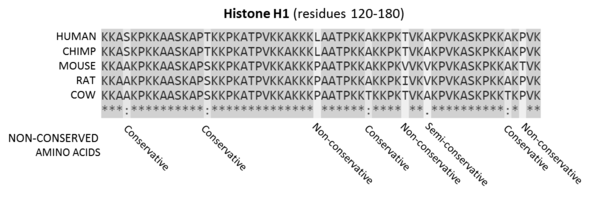|
Segregating siteSegregating sites are positions which show differences (polymorphisms) between related genes in a sequence alignment (are not conserved).[1] Segregating sites include conservative, semi-conservative and non-conservative mutations. The proportion of segregating sites within a gene is an important statistic in population genetics since it can be used to estimate mutation rate assuming no selection. For example it is used to calculate the Tajima's D neutral evolution statistic.  Sequences are the amino acids for residues 120-180 of the proteins. Residues that are conserved across all sequences are highlighted in grey. Below the protein sequences is a key denoting conserved sequence (*), conservative mutations (:), semi-conservative mutations (.), and non-conservative mutations ( ).[2] See alsoReferences
|